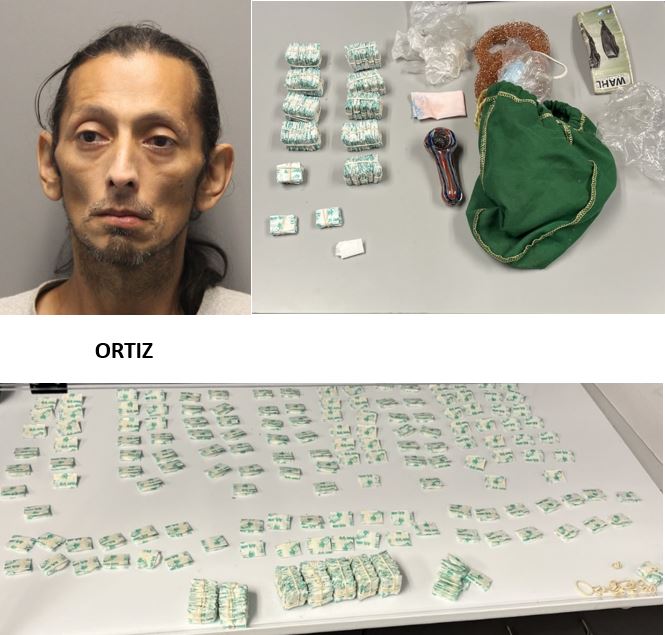Crypto
South Korea approves cryptocurrency bill to protect investors

South Korea’s National Assembly on Friday approved a bill that focuses on protecting the interests of cryptocurrency investors in the country’s first step to build a legal framework devoted to such digital assets, according to the Assembly’s official website. The legislation, which translates as the Virtual Asset User Protection Act, is expected to come into law in a year.
See related article: South Korea’s cryptocurrency bill gets nod in first phase of review, may pass this year
Fast facts
- The bill, an amalgamation of 19 proposals from lawmakers, requires crypto service providers to ring-fence user’s assets and deposits, to have insurance, to hold a portion of reserves in offline cold wallets in case of hacks or system failures, and to maintain records of all transactions.
- The legislation includes penalties for price manipulation, false promotion of crypto assets, and failing to provide required information on investors. Penalties for those convicted include a minimum of one year in prison, or a fine of three to five times the amount of profits earned from such violations.
- The bill defines “virtual assets” as an “electronic representation of an economic value that can be traded or transferred electronically.” The bill excludes the central bank digital currency (CBDC) under the Bank of Korea, the country’s central bank.
- The legislation, however, does give the Bank of Korea the right to request data from cryptocurrency platforms, a right it had been arguing for with the country’s financial regulators. The bank has stated the cryptocurrency market could have a significant impact on financial and monetary stability and hence it needs some oversight.
- In an interview with Forkast in May, Hwang Suk-jin, a Ruling People Power Party’s Digital Asset Special Committee member said the proposed bill will establish the legal rights for virtual asset users and create a safer and more reliable market for cryptocurrencies.
- As of 2020, South Korea had one of the most active cryptocurrency economies in the world, ranking 7th worldwide on the Global Crypto Adoption Index compiled by blockchain data platform Chainalysis.
- However, the country fell to 23 on the index in 2022, the same year as the US$40 billion collapse of the Terra-Luna cryptocurrency and stablecoin that was launched in the country and caused massive losses to hundreds of thousands of investors. Regardless, the Upbit crypto exchange in South Korea remains the world’s third largest by trading volume, according to CoinMarketCap data.
- The Terra-Luna debacle helped drive legislation in South Korea to establish a legal framework to cover cryptocurrencies, focusing first on investor protection. The next stage of crypto legislation is expected to focus on rules for local companies in token issuance and information disclosure.
See related article: South Korea issues guideline on cryptocurrencies as securities tokens ahead of planned legalization

Crypto
Mexico Ranks Third in Latin America for Cryptocurrency Ownership: Blockchain Trends

- Currently, 3.1 million Mexicans own cryptocurrencies such as bitcoin, ethereum, solana, dogecoin, or binance.
- Coinbase aims to enter the Mexican market with cost-effective cryptocurrency withdrawal services, aiming for a 30% reduction.
The adoption of cryptocurrencies among Mexicans has seen substantial growth, with 3.1 million individuals owning digital assets such as bitcoin, ethereum, solana, dogecoin, or binance. This accounts for 2.5% of Mexico’s population, positioning the country as the third highest in Latin America for cryptocurrency adoption, trailing behind Brazil and Argentina.
Globally, Mexico ranks 16th in cryptocurrency adoption, according to the Chainalysis Global Crypto Adoption Index.
“Facilitate the withdrawal of cryptocurrencies and offer services up to 30% cheaper than traditional cross-border payment methods.”
Luiz Eduardo Abreu Hadad, Sherlock Communications Researcher and Blockchain Advisor, wrote:
“It seems that Latin America is ready to ride the crypto wave.”
Remittances have played a pivotal role in driving this adoption. In 2023, remittances sent to Mexico totaled $63.313 billion, marking a significant increase and fueling a 60% growth in cryptocurrency exchanges to local currency transactions through platforms like Bitso Business.
Continuing with the previous Crypto News Flash report, the interest in the Mexican market among crypto exchanges continues to rise. Coinbase, for instance, aims to enter the Mexican market by offering cryptocurrency withdrawal services that are up to 30% cheaper than traditional cross-border payment methods.
Luiz Eduardo Abreu Hadad, a researcher and blockchain advisor at Sherlock Communications, noted that “it seems Latin America is ready to ride the crypto wave,” reflecting the region’s growing enthusiasm for digital assets.
Brazil leads Latin America in cryptocurrency adoption, ranking 9th globally, driven by the approval of exchange-traded funds (ETFs) for digital assets and increased acceptance of cryptocurrencies by banks.
Argentina, on the other hand, ranks second in Latin America and 15th globally for cryptocurrency adoption, with 5 million citizens owning some form of digital currency. High inflation rates and stringent capital controls have spurred this adoption among the Argentine population.
In contrast, despite El Salvador’s adoption of bitcoin as legal tender, cryptocurrency adoption has declined. The country dropped from 55th place in 2022 to 95th place in 2023 in terms of public acceptance.
In a previous Crypto News Flash report, overall, the increasing adoption of cryptocurrencies in Mexico and across Latin America underscores a growing trend influenced by economic factors like remittances, inflation concerns, and regulatory developments that shape public perception and engagement with digital assets.
No spam, no lies, only insights. You can unsubscribe at any time.
Crypto
Cryptocurrency Price Today: Bitcoin Rises Above $63,000 Over The Weekend

Crypto
Cryptocurrency after the European Union’s MiCA regulation | Opinion

Disclosure: The views and opinions expressed here belong solely to the author and do not represent the views and opinions of crypto.news’ editorial.
The Markets in Crypto-Assets Regulation (MiCA) marks a significant milestone in the European Union’s journey toward regulating the rapidly evolving crypto market. Its timeline and provisions hold immense importance for both crypto businesses and investors. As we approach crucial dates, starting with the application of stablecoin provisions from June 30, 2024, and the complete application of MiCA on December 30, 2024, the crypto landscape is undergoing a transformative phase.
Over the next two years
MiCA’s staggered timelines and transitional periods, extending up to June 30, 2026, imply a period of fragmented implementation across the EU and European Economic Area (EEA). Jurisdictions such as Ireland (12 VASPs), Spain (96 VASPs), and Germany (12 VASPs) will grant a 12-month transitional period. In contrast, other jurisdictions will offer more extended periods, such as France (107 VASPs) with 18 months, while Lithuania (588 VASPs) will likely only grant five months. This transitional phase will prompt market consolidation as not all existing service providers will secure MiCA licenses. Many will look to capitalize on this interim period before winding down operations.
The race among EU/EEA jurisdictions to become the primary hub for crypto activities intensifies, with jurisdictions like France, Malta, and Ireland competing to take the top spot. However, regulator readiness and compliance for crypto-asset businesses pose significant challenges. Regulators are facing an adjustment period to upskill their staff to process MiCA applications, particularly in jurisdictions with high applicant volumes. The complexity of various business models, encompassing numerous products unfamiliar to regulators, exacerbates this challenge. The general lack of expertise to authorize and supervise this sector requires substantial training efforts.
Challenges for crypto businesses
MiCA, coupled with the vast array of related Level-2 measures (many of which still need to be finalized) and other applicable EU instruments such as the anti-money laundering laws, the Digital Operational Resilience Act (DORA), and the Electronic Money Directive (EMD), create a complex regulatory framework. Understanding what provisions apply to each entity type and what documentation needs to be implemented will be challenging for some.
The delisting of crypto-assets, particularly stablecoins, from EU exchanges due to their issuers’ failure to obtain their licenses on time will pose considerable hurdles and limit the availability of certain assets for consumers.
Adapting to MiCA will strain many entities and require substantial investments in technological infrastructure. The Travel Rule, a requirement in which information must be shared between VASPs with each crypto transaction, also comes into effect at the same time as MiCA. The Travel Rule mandates that CASPs transfer a substantial amount of information about the originator. This includes their address, personal identification number, and customer identification number. In rare cases, it may even require the disclosure of the originator’s date and place of birth. This adds another layer of complexity, further highlighting the need for harmonization within the EU and solutions to comply with the Travel Rule that are interoperable and enable secure data sharing while preserving user privacy.
Key crypto market outcomes
Despite the challenges, MiCA instils confidence in EU entities due to heightened regulatory oversight, the promotion of investor protection and attracting mainstream institutional participation. Enhanced consumer protection measures mitigate risks such as fraud and hacking, fostering trust among retail clients.
MiCA’s reporting requirements will result in regulators across the EU possessing more data, empowering them to monitor market activities effectively. The ability to freely passport activities across the EU will facilitate cross-border operations and reduce regulatory fragmentation while expanding market reach.
MiCA’s prescriptive nature and all-encompassing regime set a precedent for global regulatory frameworks. Other jurisdictions are already observing and may replicate some of MiCA’s provisions and its approach, contributing to regulatory harmonization on a worldwide scale. However, concerns remain as to whether it will stifle growth and innovation and whether businesses will look to relocate to more permissive and less restrictive jurisdictions.
Steps after MiCA
MiCA’s gaps in regulating emerging areas like true defi (the provision of financial services or issuance of financial assets without identifiable intermediaries and with no single point of failure), lending, and NFTs necessitate ongoing policy discussions and further regulatory measures. Reports on these aspects will inform future regulatory developments, potentially leading to a second iteration of MiCA in at least the next four to five years or supplementary measures.
MiCA signals a new era of regulation in the crypto market, aiming to balance innovation with investor protection and market integrity. While challenges persist, MiCA lays the groundwork for a more transparent, secure, and inclusive crypto framework in the EU and beyond. As the crypto landscape continues to evolve, regulatory regimes must adapt to emerging trends and technologies, ensuring sustainable growth and fostering investor confidence.
-

 News1 week ago
News1 week agoTracking a Single Day at the National Domestic Violence Hotline
-

 News1 week ago
News1 week agoA Florida family is suing NASA after a piece of space debris crashed through their home
-

 World1 week ago
World1 week agoIsrael accepts bilateral meeting with EU, but with conditions
-

 World1 week ago
World1 week agoIsrael will be the ‘ultimate loser’ in war with Hezbollah, Iran says
-

 World1 week ago
World1 week agoNew Caledonia independence activists sent to France for detention
-

 News1 week ago
News1 week agoArkansas police confirm 4th victim died in grocery store shooting
-

 Politics1 week ago
Politics1 week agoDeSantis signs bill allowing residents to kill bears, vetoes bill that fines slow left lane drivers
-

 World1 week ago
World1 week agoNetanyahu says war will continue even if ceasefire deal agreed with Hamas















